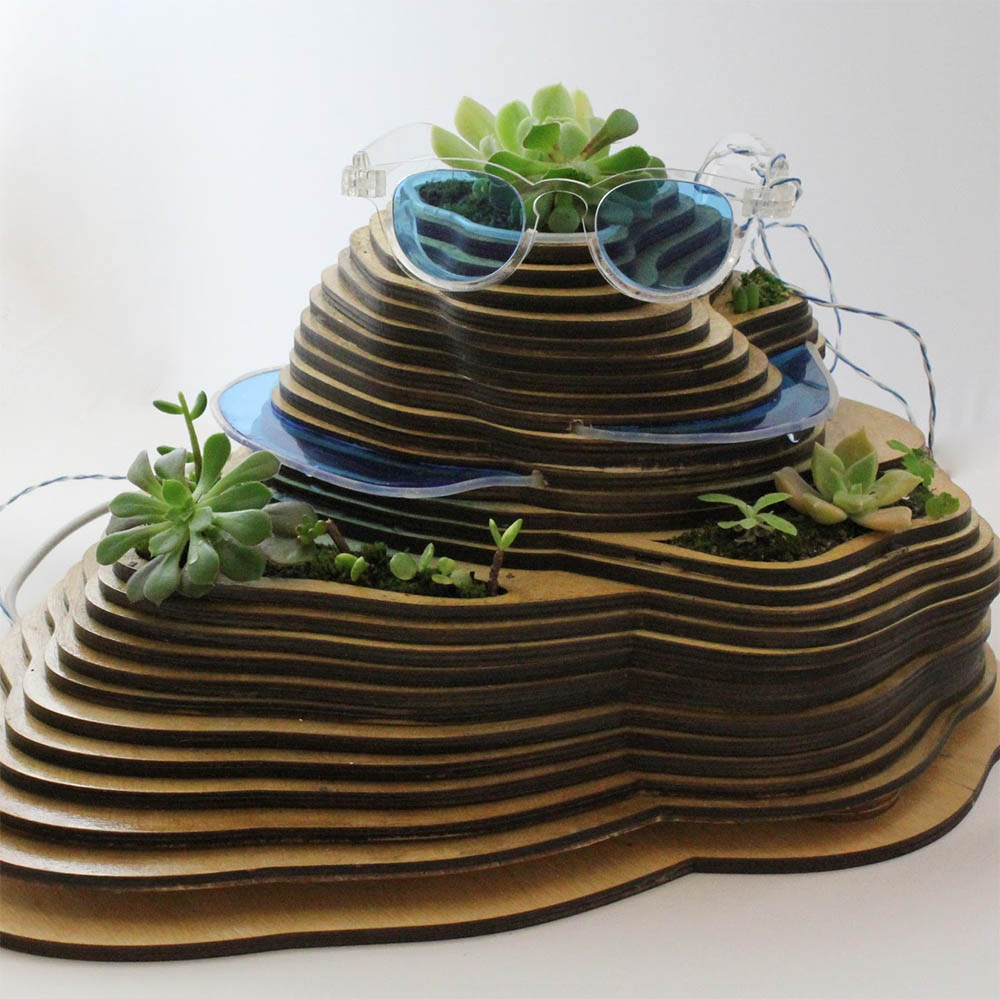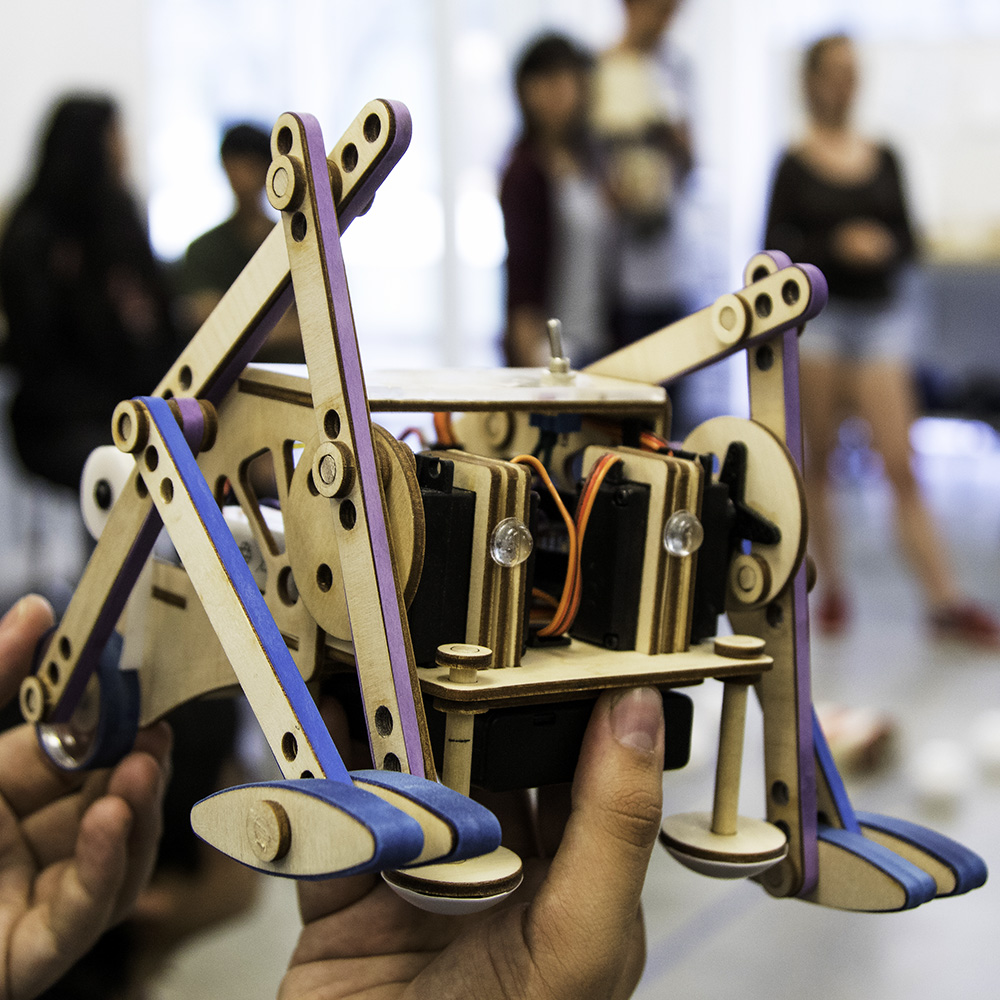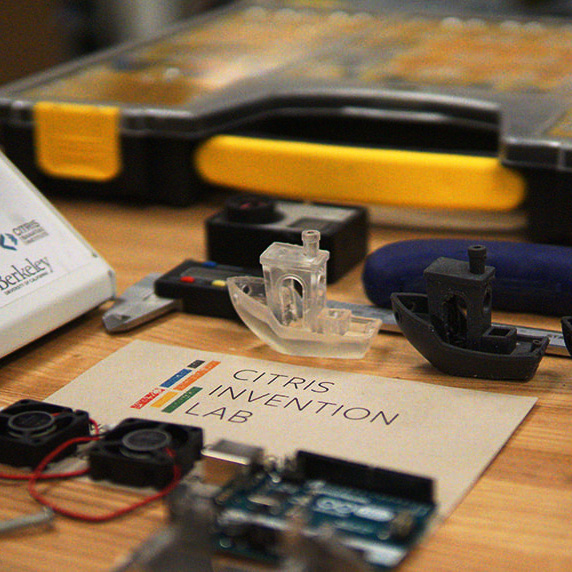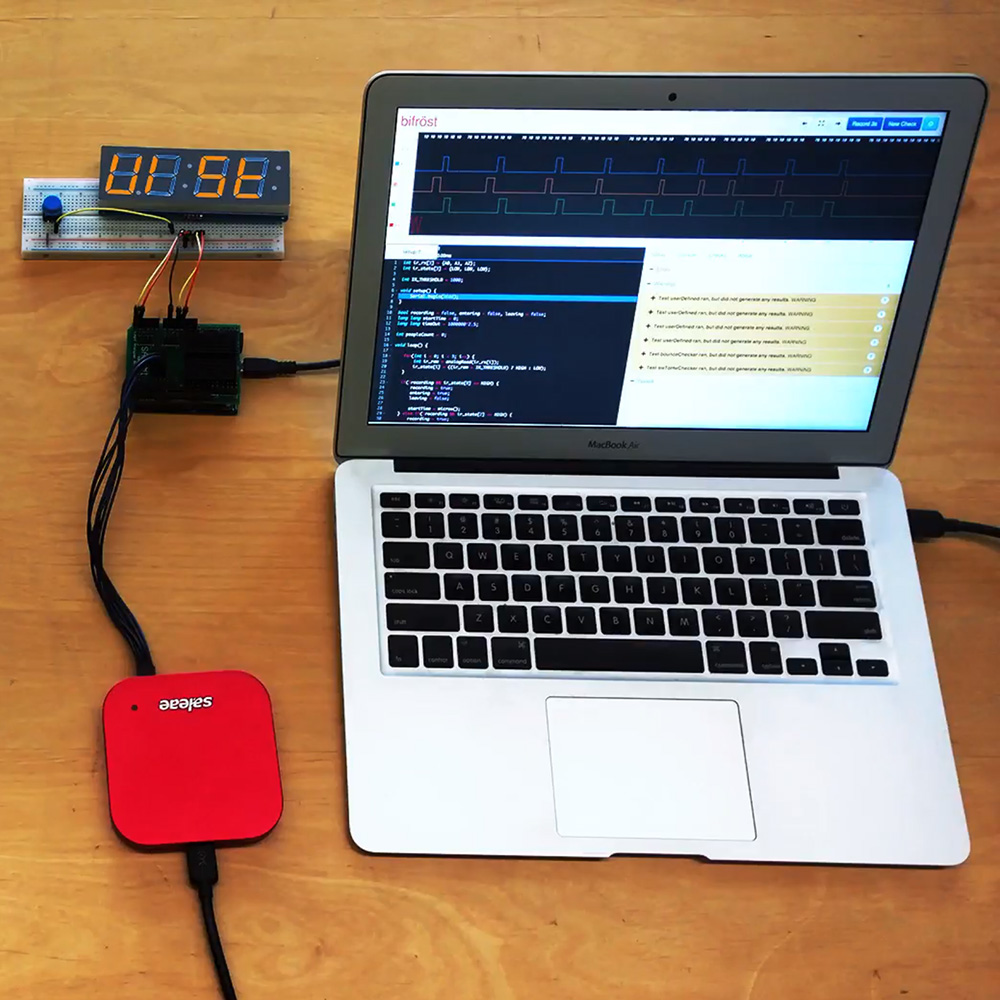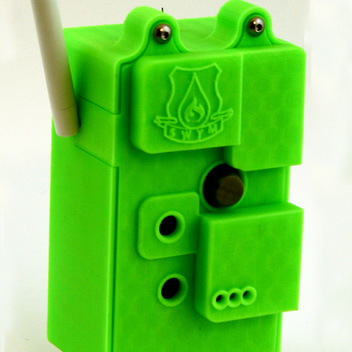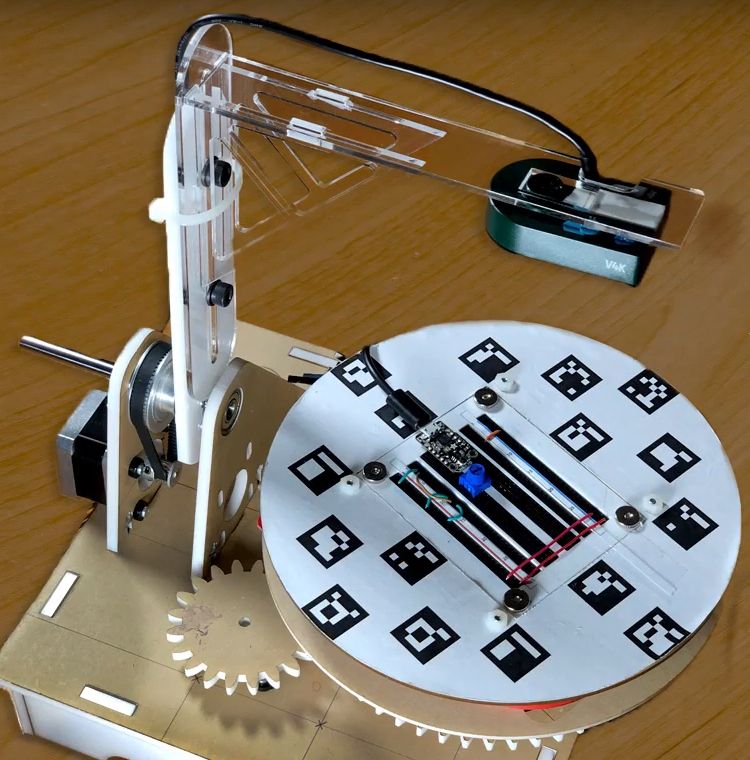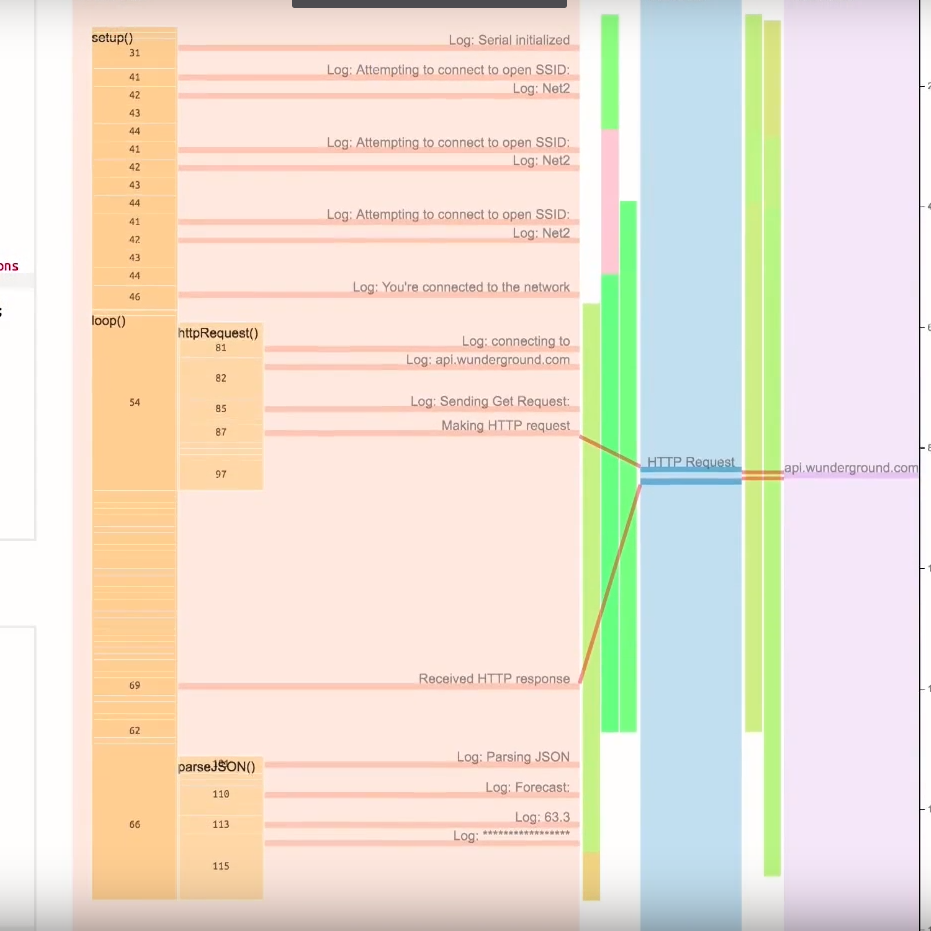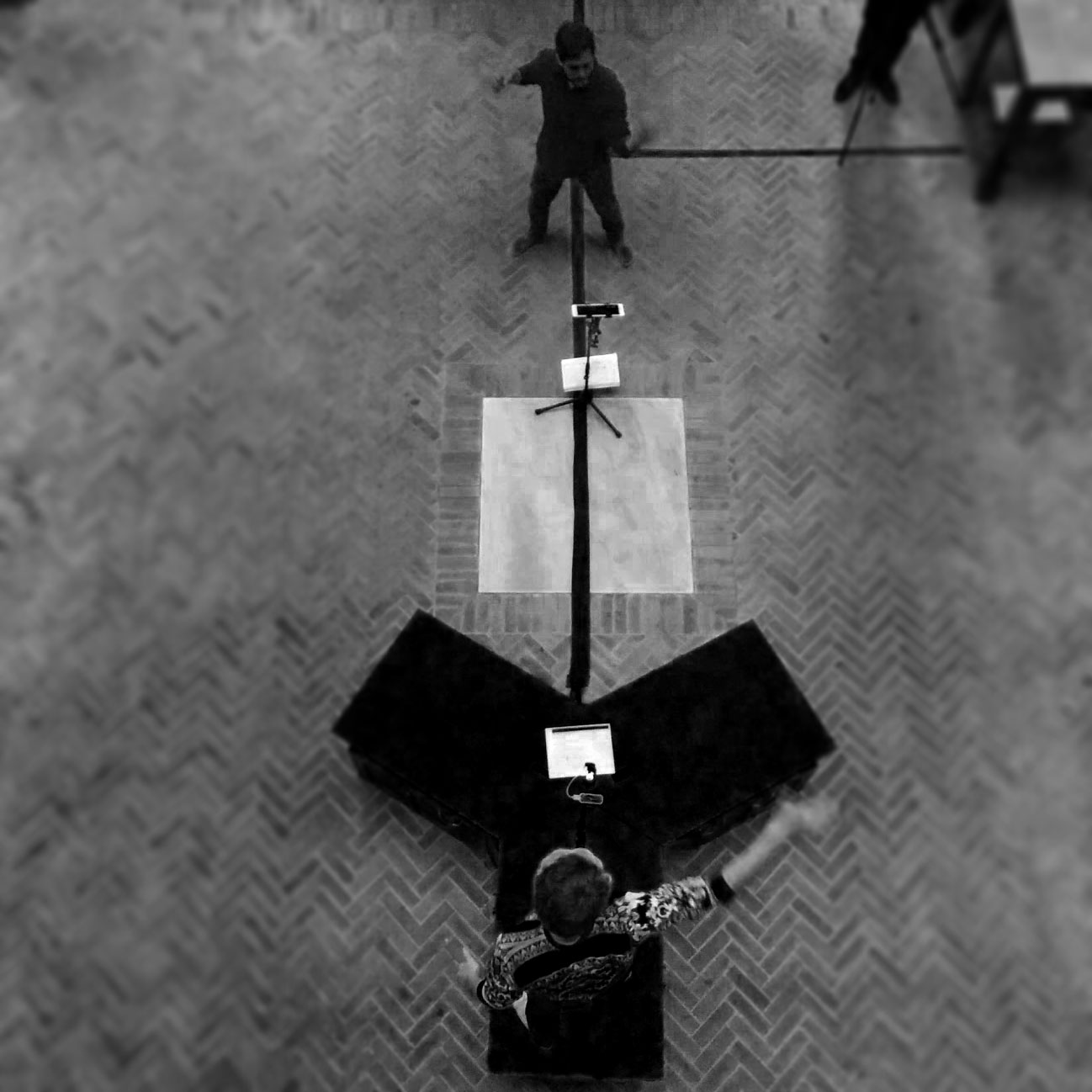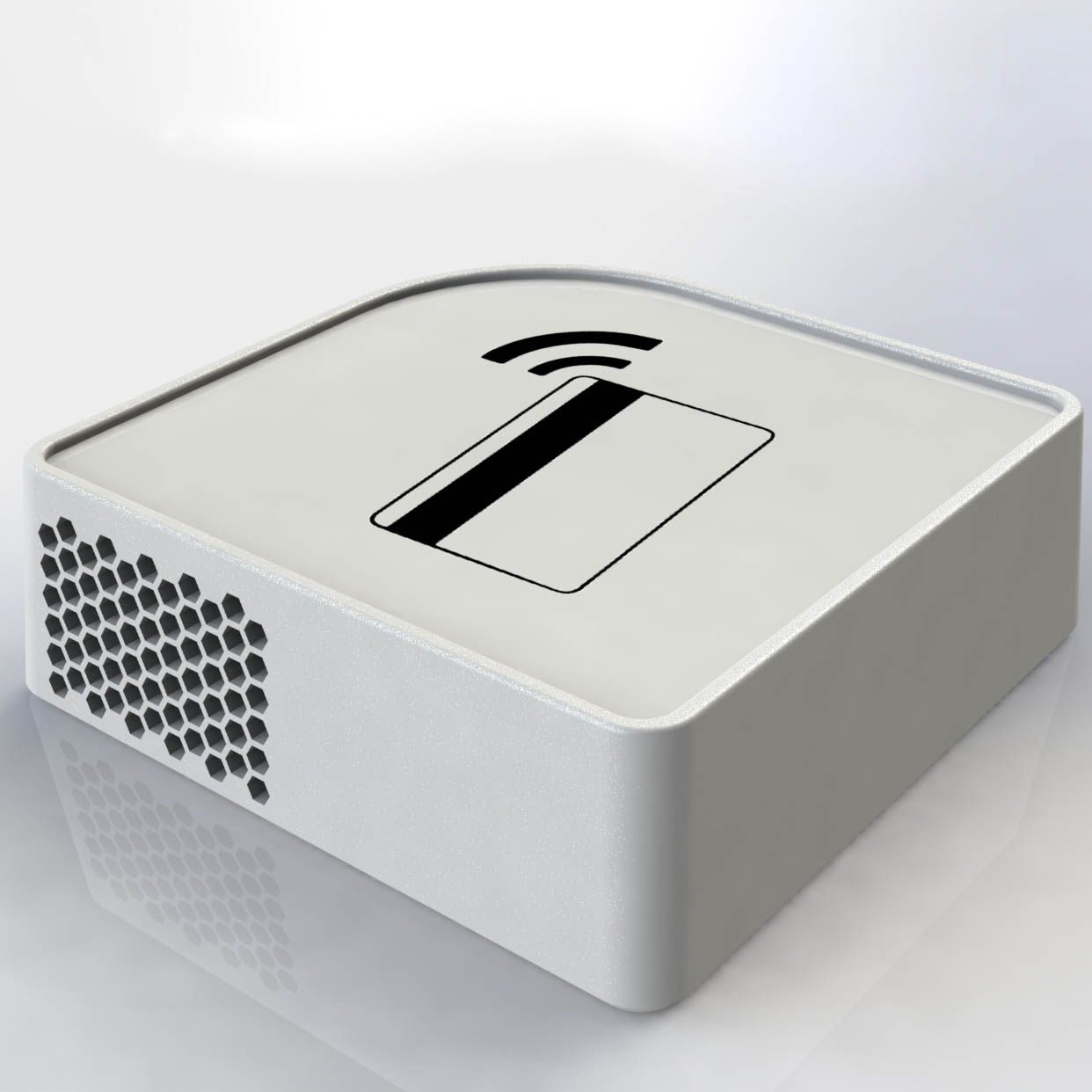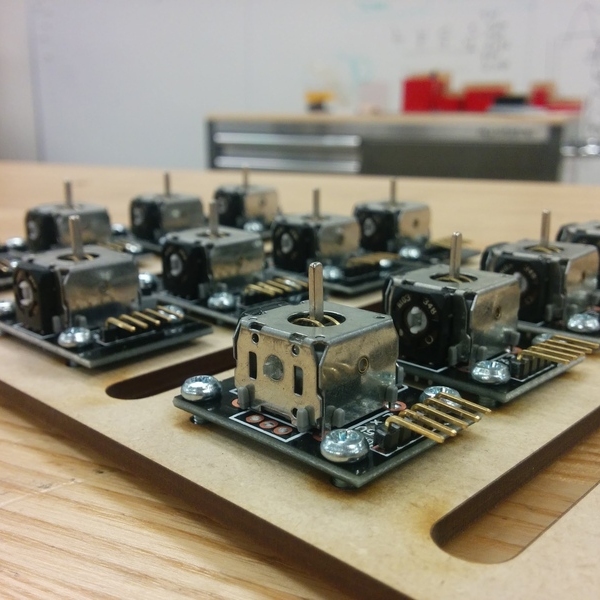Bifröst
Better Embedded Systems Debugging

Bifröst links the divide in embedded systems programming of hardware and software debugging. This work is published in UIST 2017
Team
Mitchell Karchemsky
Will McGrath
Daniel Drew
Jeremey Warner
Majeed Kazemitabaar
David Mellis
Björn Hartmann
My Role
User Testing
Paper Writing
System Engineering
Methods
Prototyping
Iterative Design
Software Programming

